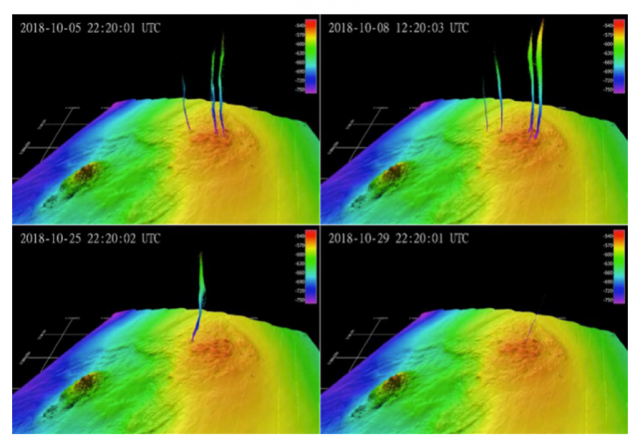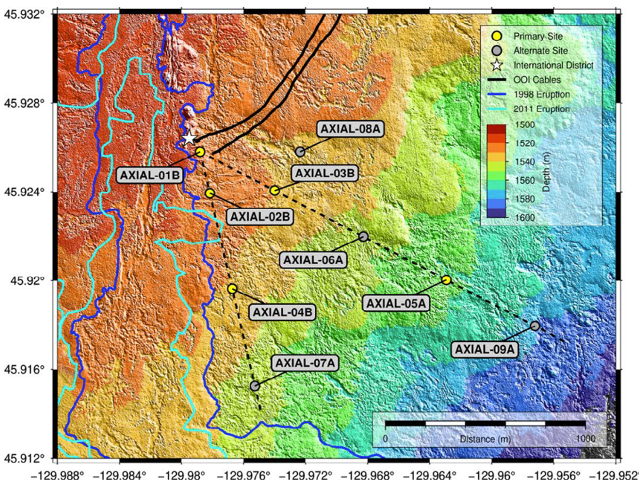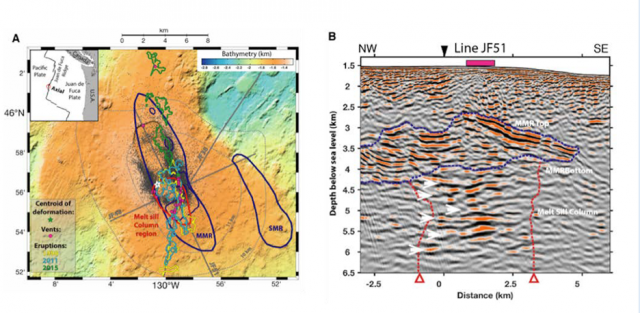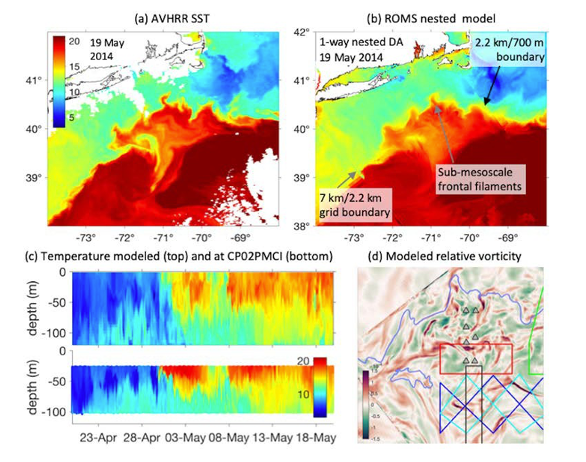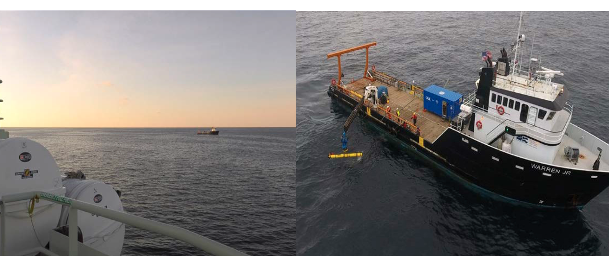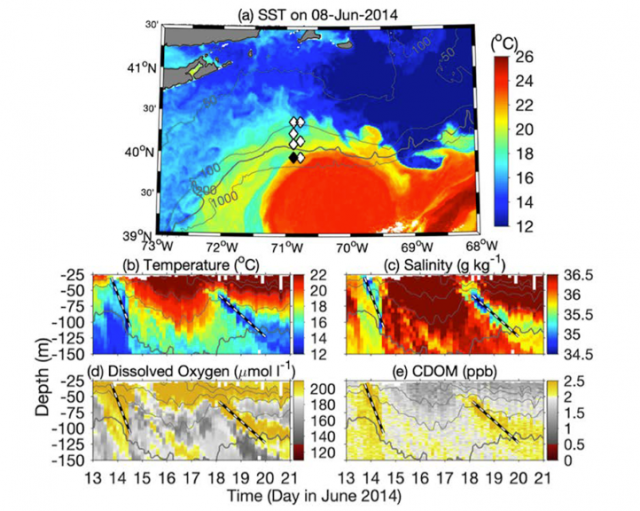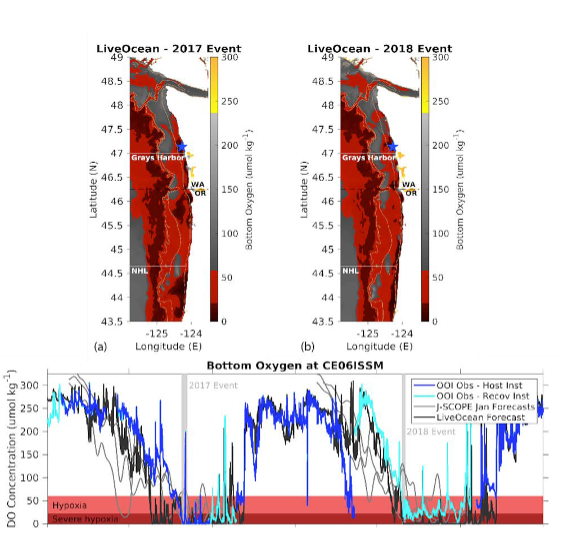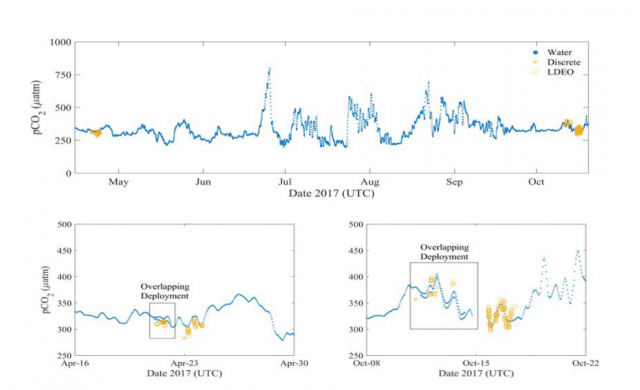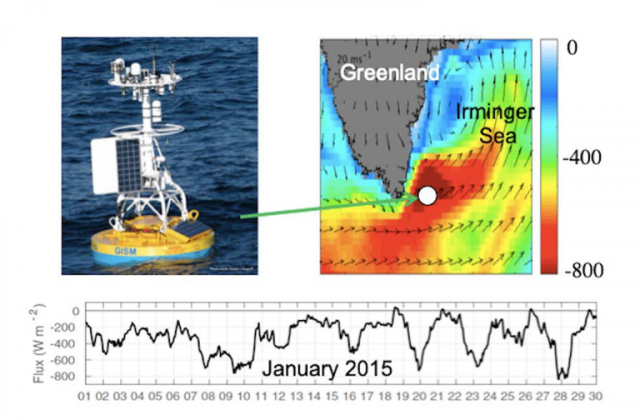Irminger Sea Convection and the roles of Atmospheric Forcing and Stratification
The high-latitude North Atlantic, is a region where seasonal convection results in deep water formation, a process critical to the Atlantic Meridional Overturning Circulation (AMOC). Surface cooling by cold air and strong winds in the Irminger Sea transforms the surface water and drives deep convection in winter. Prior studies have shown that AMOC strength is linked to the extent of water mass transformation in the Irminger Sea and Iceland Basin. A study by de Jong et al. (2025) used a 19-year time series with weekly resolution compiled from moorings and Argo floats to evaluate the year-to-year variability of deep convection and its relationship to atmospheric forcing versus water column stratification.
A time series of surface forcing for the 19-year analysis period (2002-2020) was obtained from the European Center for Medium-range Weather Forecasting (ECMWF) ERA-5 global atmospheric reanalysis. Hydrographic data from the near-surface to 2500 m was collected from three sources: the NIOZ Long-term Ocean Circulation Observations (LOCO) mooring, the GEOMAR Central Irminger Sea (CIS) mooring, and the OOI Hybrid Profiler Mooring (HYPM). Surface temperature and salinity from Argo, ERA-5, and the OOI surface mooring, along with nearby Argo profiles, were used to provide data at the surface and in the upper water column. The records were merged with 25 m vertical resolution and one week time resolution. Mixed layer depth was determined from the hydrographic profiles using a published algorithm with further quality control using multiple criteria.
The time series of potential vorticity (PV) and mixed layer depth (MLD; Fig. 1d), highlights the significant interannual variability. Some years (e.g. 2002-2003) show relatively shallow winter MLD and little evidence of sustained low PV (which would indicate deep mixing) between years. Other years (e.g. 2015-2016) show strong convection, deep MLD, and sustained low PV. While the change in stratification due to warming and freshening related to climate change is expected to weaken convection future convection, analysis showed that in this record there was a strong correlation between the annual maximum MLD and the total accumulated winter heat loss. The correlation between maximum summer stratification and maximum MLD the following winter was not significant. Thus, among other findings, the authors concluded that during the period analyzed atmospheric forcing is three times more important than pre-existing stratification in determining the maximum winter mixed layer depth in the Irminger Sea.
The processed and edited temperature and salinity profiles from the OOI Irminger Sea HYPM from September 2014 to May 2020 are described by Le Bas (2023). The processed data are publicly available from the NOAA National Centers for Environmental Information (NCEI) and referenced with a DOI. The NCEI record includes information about data quality control, validation and drift correction, gridding method, and algorithms for computation of data products.
This project shows the potential for long-duration OOI moored profiler records to be combined with other data sources to provide unique insights into interannual variability of mixing and deep convection in the Irminger Sea. It is notable that the authors undertook a significant data quality control effort and took advantage of the OOI shipboard validation CTD casts (along with non-OOI CTD data sources) in their processing.
[caption id="attachment_35691" align="alignnone" width="624"] Figure 29: Time series of the combined LOCO, CIS, OOI and Argo record from 2002-2020. a) temperature, b) salinity, c) potential density and d) potential vorticity with mixed layer depth overlaid (black dots). From de Jong et al., 2025.[/caption]
Figure 29: Time series of the combined LOCO, CIS, OOI and Argo record from 2002-2020. a) temperature, b) salinity, c) potential density and d) potential vorticity with mixed layer depth overlaid (black dots). From de Jong et al., 2025.[/caption]
___________________
References:
De Jong, M.F, K.E Fogaren, L. LeBras, L. McRaven and H. Palevsky, (2025). Atmospheric forcing dominates the interannual variability of convection strength in the Irminger Sea. J. Geophys. Res., 130, e2023JC020799. https://doi.org/10.1029/2023JC020799.
Le Bras, I. (2023). Water temperature and salinity profiles from the Ocean Observatories Initiative Global Irminger Sea Array Apex profiler mooring from September 2014 to May 2020 (NCEI Accession 0285241). NOAA National Centers for Environmental Information. Dataset. https://doi.org/10.25921/wzvr-fk49.
Read MoreLong-Term Monitoring of Gas Emissions at Southern Hydrate Ridge
Identifying the parameters that control or influence seabed methane release is important to refining understanding of the carbon cycle. Data from the Regional Cabled Array are providing time-series required to quantify the flux of methane from the seafloor.
Read MoreFacilitating Observatory-Based Subseafloor Science
Data flowing from the Regional Cabled Array forms an unparalleled foundation to understand the relationships between microbial, hydrological, geochemical, and geophysical processes in active oceanic crust. Proposed Axial drilling will provide a unique opportunity to determine the nature of subseafloor hydrological properties and develop a 3-D understanding of subseafloor processes in unsedimented crust.
Read MoreDiscovery of Axial Seamount Deep Melt-Mush Feeder Conduit
Recent observations at Axial Seamount provide new seismic images of the deep magma plumbing system, revealing a stacked sill complex beneath the main magma reservoir of this submarine volcano. The discovery of this deep melt-mush conduit at Axial, where long-term monitoring observations are supported by the Regional Cabled Array, is providing new understanding of magmatic systems on Earth.
Read MoreA Data Assimilative Reanalysis at the New England Shelf Pioneer Array
Scientists undertook a four-year retrospective reanalysis of ocean circulation at the Pioneer Coastal Array site. The system captures circulation features that characterize the inhomogeneous, rapidly evolving, and ephemeral submesoscale circulation.
Read MoreShelfbreak Productivity Interdisciplinary Research
The continental shelfbreak of the Mid-Atlantic Bight supports a productive and diverse ecosystem, driven by primary production by phytoplankton. The Coastal Pioneer Array provided unprecedented spatial and temporal resolution of the frontal system, including a four-dimensional context to conduct a detailed study of frontal dynamics and plankton communities.
Read MoreShelf Water Subduction and Cross-Shelf Exchange
In recent years, the Gulf Stream in the Northwest Atlantic has become increasingly unstable and is shedding more warm core rings in the Slope Sea.The Coastal Pioneer Array at the Mid-Atlantic Bight shelf edge identified a form of offshore transport of water for the first time, supporting an ocean model to study the dynamics of the shelf-water offshore transport.
Read MoreForecasting Hypoxia to Support the Dungeness Crab Fishery
Hypoxia is regularly experienced in Washington and Oregon waters and has been linked to mass mortality events of hypoxia-intolerant species, including the valuable Dungeness crab. The Coastal Endurance Array is aiding the development of a hypoxia forecasting system in this region.
Read MoreIdentifying Impacts of Ocean Acidification and Hypoxia
Ocean acidification has emerged as a leading threat to marine ecosystems, and the fisheries and shellfish growers that depend on a productive and vibrant ocean. The Coastal Endurance Array in the Pacific Northwest array is situated in an epicenter for early impacts from the co-occurrence of ocean acidification and hypoxia.
Read MoreDrivers of Ocean Overturning Circulation Revealed
rminger Surface Mooring data were used to identify a new mechanism by which the atmosphere controls ocean heat loss leading to dense water formation. The results are particularly important as the connection between air-sea exchanges and the ocean circulation is still poorly understood, hindering attempts to understand the climate change induced slowdown of the Atlantic circulation.
Read More
